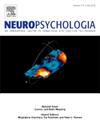Functional neural oscillatory activities reveal the impact of attentional instructions on speech auditory feedback control
IF 2
3区 心理学
Q3 BEHAVIORAL SCIENCES
引用次数: 0
Abstract
Speech production relies on precise integrations between vocal and auditory feedback mechanisms for fluent verbal communication. This study investigated how explicit attentional instructions influence speech auditory feedback control. A total of forty-three participants performed speech vowel vocalizations while receiving brief (200 ms) and randomized pitch shifts at ±100 cents magnitude in their auditory feedback during concurrent electroencephalography (EEG) recordings. Twenty-one participants were randomly assigned to an attentional-instruction group and were instructed to focus their attention on detecting pitch-shift stimuli via pressing a button whereas no such instructions were provided for the remaining twenty-two participants in the no-instruction group. Behavioral data revealed a significantly smaller peak magnitude of vocal compensation responses to auditory feedback alterations in the attentional-instruction compared with no-instruction group, suggesting an attentional modulation of the speech motor control mechanisms. Time-frequency analyses of EEG data showed a significantly stronger desynchronization of the high-beta band (20–30 Hz) neural activities for the attentional-instruction group, indicating enhanced audio-vocal integration when participants attentively monitored their speech feedback. In addition, we found that the accuracy of button-press responses for detecting pitch shifts positively correlated with the alpha and beta band power (8–30 Hz) while compensation magnitude positively correlated only with the gamma band power (30–80 Hz). These findings provide new insights into the effects of attentional instruction on the neural and behavioral correlates of speech motor control, emphasizing its application as a viable tool for targeted treatment of speech disorders in clinical populations.
功能性神经振荡活动揭示了注意指令对言语听觉反馈控制的影响
语言的产生依赖于声音和听觉反馈机制之间的精确整合,以实现流利的语言交流。本研究探讨外显注意指示对言语听觉反馈控制的影响。在同步脑电图(EEG)记录中,共有43名参与者在接受短时间(200 ms)和±100分量级随机音高变化的听觉反馈的同时进行语音元音发声。21名参与者被随机分配到注意力指导组,并被指示将注意力集中在通过按下按钮来检测音高变化刺激上,而其余22名参与者在无指导组中没有得到这样的指导。行为学数据显示,与无指令组相比,注意指令组对听觉反馈变化的声音补偿反应的峰值幅度明显较小,这表明注意调节了言语运动控制机制。脑电图数据的时频分析显示,注意-教学组的高β带(20-30 Hz)神经活动的去同步性显著增强,表明当参与者注意监测他们的语音反馈时,他们的听觉-声音整合得到增强。此外,我们发现检测音高偏移的按键响应精度与α和β波段功率(8-30 Hz)正相关,而补偿幅度仅与γ波段功率(30-80 Hz)正相关。这些发现为注意指导对言语运动控制的神经和行为相关的影响提供了新的见解,强调了其作为临床人群中有针对性地治疗言语障碍的可行工具的应用。
本文章由计算机程序翻译,如有差异,请以英文原文为准。
求助全文
约1分钟内获得全文
求助全文
来源期刊

Neuropsychologia
医学-行为科学
CiteScore
5.10
自引率
3.80%
发文量
228
审稿时长
4 months
期刊介绍:
Neuropsychologia is an international interdisciplinary journal devoted to experimental and theoretical contributions that advance understanding of human cognition and behavior from a neuroscience perspective. The journal will consider for publication studies that link brain function with cognitive processes, including attention and awareness, action and motor control, executive functions and cognitive control, memory, language, and emotion and social cognition.
 求助内容:
求助内容: 应助结果提醒方式:
应助结果提醒方式:


